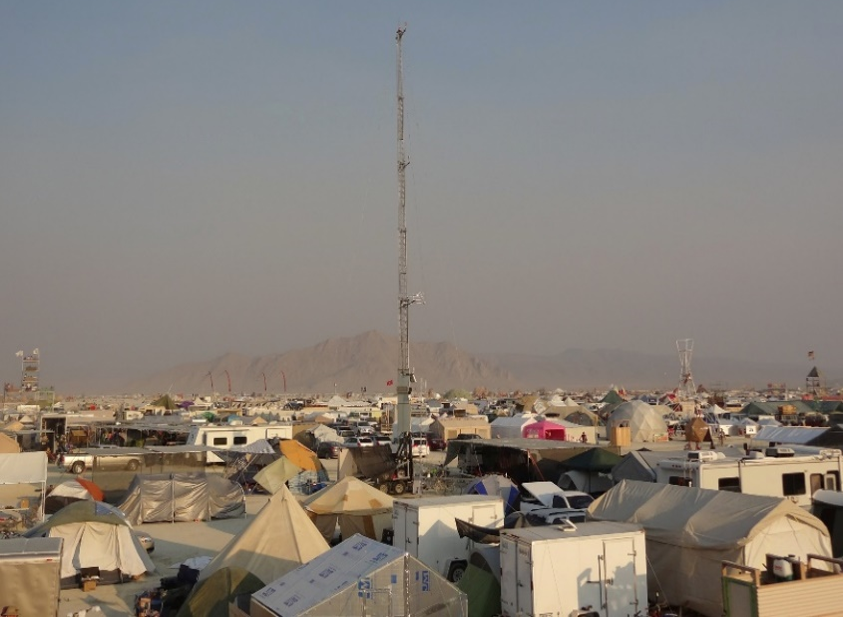Micrometeorology of an ephemeral desert city, the Burning Man experiment

Oliphant, Andrew J., Sam Stein, and Garrett Bradford. "Micrometeorology of an ephemeral desert city, the Burning Man experiment." Urban Climate (2017).
Observations are presented from a 12-day micrometeorological experiment investigating impacts of an ephemeral city (Black Rock City, Nevada, population 70,000), which emerges each year on a flat, arid, vegetation-free playa in late summer for the week-long ‘Burning Man’ event. Analysis focuses on observations from a 28 m tower deployed in the center of the city prior to, and throughout the event. Wind profiles show a reduction in wind speed, particularly below 5 m and indicate an increase in roughness length. Surface radiation and energy fluxes were remarkably unchanged after the development of the city. Both cases resembled other arid surfaces and somewhat other urban surfaces, though with little anthropogenic and much less heat storage flux than traditional cities. CO2 fluxes increased rapidly from 5.2 gC m− 2 d− 1 on the first full day of measurement to 24.8 during the event and peaked during the exodus (33.3 gC m− 2 d− 1). Inventory modeling revealed sources were mostly stationary, especially on-site electricity generation for air conditioning units. The car-free nature of the main event reduced the mobile sources to less than metabolic sources from the population itself and the CO2 flux per capita was three times smaller than on arrival and exodus days.